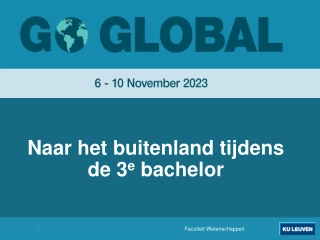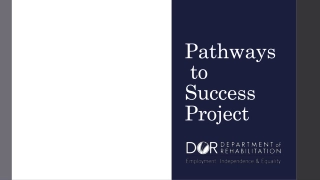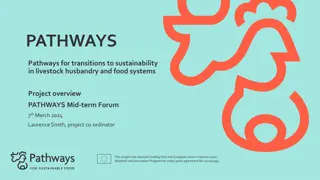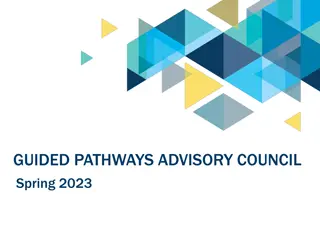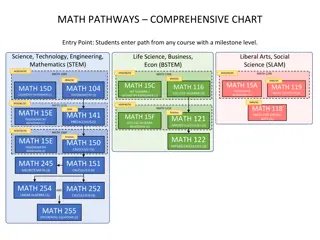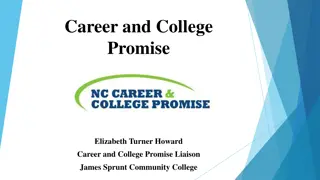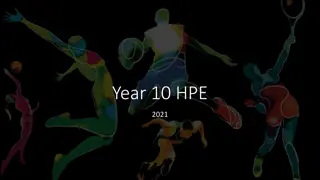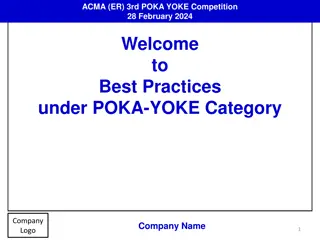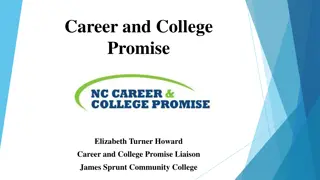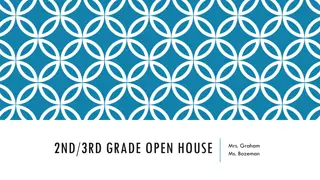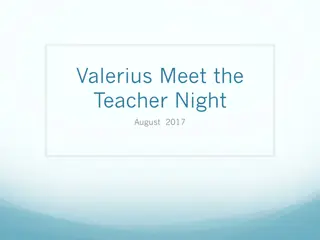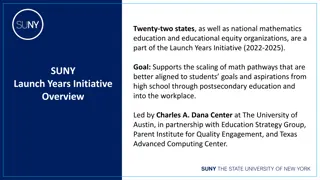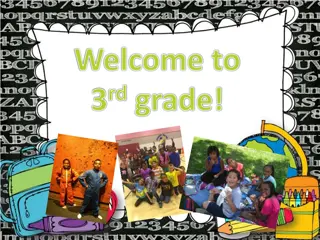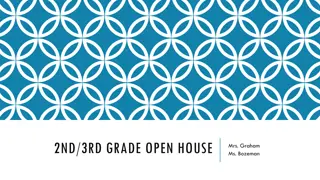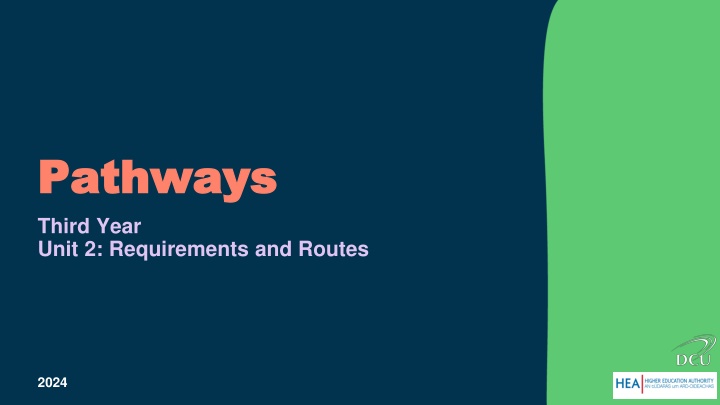
Exploring Pathways to Further Education and Careers: Unit 2 Requirements and Routes
Delve into Unit 2 of the Pathways Third-Year curriculum for 2024, focusing on discussing supports and barriers for students pursuing higher education, researching entry requirements for various courses, and understanding different routes to qualifications. Engage in activities to enhance literacy, self-management, critical thinking, and collaboration skills. Discover programs like DARE, HEAR, and Access Programmes designed to assist students in their educational journey.
Download Presentation

Please find below an Image/Link to download the presentation.
The content on the website is provided AS IS for your information and personal use only. It may not be sold, licensed, or shared on other websites without obtaining consent from the author. If you encounter any issues during the download, it is possible that the publisher has removed the file from their server.
You are allowed to download the files provided on this website for personal or commercial use, subject to the condition that they are used lawfully. All files are the property of their respective owners.
The content on the website is provided AS IS for your information and personal use only. It may not be sold, licensed, or shared on other websites without obtaining consent from the author.
E N D
Presentation Transcript
Pathways Pathways Third Year Unit 2: Requirements and Routes 2024
Duration: Approx. 2 hours Unit 2: Requirements and Routes Suggested learning intentions Wellbeing Indicators Connected Resilient Responsible We are learning to o discuss supports and barriers for students who want to do further study after school o consider the impact of seeing someone like you in a desired job/career o research entry requirements for a variety of higher education courses o recognise that there are a range of routes to qualification, each with pros and cons o reflect on our learning and next steps SLIDES ACTIVITY What will we be doing? Key Skills Being literate Managing myself Staying well Managing information and thinking Being numerate Being creative Working with others Communicating 3 Introduction to the icons 4-5 1 Discussing barriers and supports (including financial) for students accessing further and higher education 6-9 2 Think about the importance of seeing/knowing someone like us in the jobs/careers we want 10 3 Researching the entry requirements for a range of qualifications NB: internet is required for this activity Comparing traditional and alternative routes to the same qualification NB: Print copies of the case studies (Slides 12-13) in advance 11-14 4 5 Describing and analysing what we have learned and identifying next steps 15 Checking in with the learning intentions 16 Extension task Recording a Ted-style talk based on the idea that you have to see it to be it 17
Unit 2, Introduction Hi, I m Dave. Nice to meet you! I m here to tell you that we use icons (the small pictures below) in this unit. These will help you to understand what you will be doing during the different activities. Have fun (and learn lots)! Class discussion Individual work Reading Group work Extension activity Pair work
Unit 2, Activity 1 DARE: A support for school leavers under the age of 23 who have one or more conditions or disabilities from a list that includes ADD or ADHD, Dyslexia, Dyspraxia and others, and can prove that this has had a negative impact on their secondary education. HEAR: A financial support for school leavers under the age of 23 who come from lower income families, went to a school or come from a place that is considered disadvantaged. ACCESS PROGRAMMES: Programmes that provide participating students with the skills and knowledge needed for undertaking a full-time university course and to make the transition to third level easier. Students are also supported to identify and choose the course that is best suited to their interests and abilities. SUSI: Ireland s national awarding authority for further and higher education grants. SUSI offers funding to eligible students in approved full-time courses at PLC, undergraduate and postgraduate levels. PATH I: Programme that aims to increase the number of students from under-represented groups entering initial teacher education. The DCU Pathways units are an example of a Path I initiative. 1916 BURSURY: Funding scheme to encourage participation and success by students from sections of society that are significantly under-represented in universities.
Unit 2, Activity 1 Aideen my dad passed away when I was in 2ndyear. we got a talk from DCU [Dublin City University] about the access service in 5thyear. [Our school was] a stone s throw from the DCU Glasnevin campus. I remember thinking that I was ticking a lot of boxes my parents didn t go to college and my mam was a single parent. I asked the guidance counsellor if I could apply, and she said no because our school wasn t a disadvantaged school. But I thought, what s the worst that will happen? they will say no . So, I went and got all the paperwork mainly because it would have helped my mam out. [A course in DCU] was the only access course I applied for. The day of CAO I got a call from DCU saying that I had been given the place, but at that stage, I decided to go with my first choice in DIT [Dublin Institute of Technology]. I don t know who it was in the DCU access office, but she said, Do you want us to send your paperwork to DIT? I didn t even know that was an option! I got a very small grant it was the lowest one, but that financial help from DIT access was amazing. There was no way I would have had the [money] to do the Postgraduate Masters in Education (PME) straight away. That is why I ended up doing it so late financially I wouldn t have been able to do it straight away.
Unit 2, Activity 2 Lena I was the first person in my family to go to college. Getting there was an achievement in itself. I attended a DEIS school. I am [now] teaching in the school I went to. That was my motivation to become a teacher to be able to go back there. I always stress to [my students] about the grants that are there, if they are worried about money. There is the likes of the SUSI grant that can support them. I was able to avail of that and it helped me to go to college.
Unit 2, Activity 2 Sometimes [my students] don t believe me when I tell them that I went to their school and I m from their area. Lena, Religion teacher
Unit 2, Activity 2 Importance of diversity in the classroom (1.29 mins)
Unit 2, Activity 2 I say that if I can do it, then so can they. They see someone like themselves that has done it. They know it is possible. Lena, Religion teacher
Unit 2, Activity 3 1 4 2 3 Vet medicine: min H5 in Chemistry Law with French: min H3 French Medicine: HPAT exam (intelligence test) & min 480 LC points Engineering: min H4 Mathematics 8 7 5 6 ? Primary teaching??? ? ?
Unit 2, Activity 4 Nasir It was during the second half of my secondary school experience that I made my decision in my own mind [that] teaching [Art] was definitely something that I wanted to do. Unfortunately, I didn't get the [Leaving Certificate] points that I wanted to... All of my friends were celebrating their results, and I was at home crying because my results were nowhere near what I needed them to be. That was very, very difficult. I didn t get a CAO offer. I thought that was the only way to get into college and get to do what I wanted to do. It was a very difficult time. My family encouraged me to still pursue the dream job I had wanted to do for so long. So, I decided to do a Post Leaving Certificate (PLC) a year-long portfolio preparation course. This would set me up to submit my art portfolio to get into Art College. But I missed out on a place in the Art College by about 10 or 15 points. My old art teacher offered words of encouragement... So, I did a 2-year higher National Diploma in Graphic Design. I always had an interest in graphic design... It was something I enjoyed. After the two years, I submitted my portfolio for a second time to art colleges and thankfully I got in. They allowed me to go into the 2ndyear of their BEd art teaching course... It took a year off my course, and it was amazing to get the place. I completed 3 years in the National College of Art and Design (NCAD) and qualified after 6 years (in total) as an Art teacher. My graduation day was the most rewarding day. I felt I had completed the journey...
Unit 2, Activity 4 Anna I got really low [Leaving Certificate - LC] points. I failed Ordinary level Maths, which was a surprise I had no idea what I wanted to do. I knew that I loved working with children. After my LC, I did a one-year PLC in Childcare and Early Education. After that, I ended up working in a creche. I was 18 getting my first full time job. My friends all went off to college and I was working full time. I was earning money, so I was happy enough. But, when I was about 20, I kind of had enough. I felt like I could do a lot better and be earning more money. Although I loved kids, I wasn t happy doing it [anymore]. I wasn t ready to commit to repeating the full LC but I thought I m going to repeat that Maths . I was 22 by the time I did all of this. I was still in the same job. I got the Maths and that was the start of it then. I knew I wanted to go back to college. I waited until I was 23 and I went back as a mature student. So, I didn t need access to my LC points to gain access to the course I wanted. I did my undergraduate degree (four years) in Psychology. I chose that because I became quite interested in how children learn just from working the pre-school. In the third year of the degree, I knew I missed working with children. I had gotten my love of learning back. I started to think I want to be a teacher . I wasn t like some people who have always known they wanted to be a teacher. I [decided] to go straight into it because I was in a good momentum but I needed higher level Irish So, while I was in the final year of my degree, I repeated the Irish LC in a night school. It was hard work. I wanted to prove to myself that I could do it. I was aiming for a 1stin my undergrad while passing the LC paper. I finished my PME (primary) a couple of years ago graduated in 2019. This is the best thing I ve ever done. I m so happy I made this choice.
Unit 2, Activity 4 Traditional route (primary & post-primary) Leaving Certificate which meets entry requirements BEd or undergraduate followed by PME Nasir s route Anna s route Step 1 Leaving Certificate (insufficient points) PLC Leaving Certificate (insufficient points) PLC Step 2 Step 3 National Diploma (graphic design) BEd Work in creche/pre-school + repeat LC Maths Degree (Psychology) + Repeat LC Irish PME 9 years Step 4 Step 5 Time required BEd = 4 years Undergraduate degree + PME = 5 years 6 years
Unit 2, Activity 5 WHAT? Describe what you learned in this Pathways unit SO WHAT? Analyse why this matters NOW WHAT? Identify effective next steps with a desired future job/career in mind
Unit 2, Checking in with the learning intentions Hello again! How did you get on with Unit 2? Did you learn to ? o discuss supports and barriers for students who want to do further study after school o consider the impact of seeing someone like you in a desired job/career o research entry requirements for a variety of higher education courses o recognise that there are a range of routes to qualification, each with pros and cons o reflect on our learning and next steps
Unit 2, Extension activity Here s an idea for you. Record a TED Record a TED- -style talk based on style talk based on the idea of you have to see it to the idea of you have to see it to be it with a desired future be it with a desired future job/career in mind. job/career in mind. If possible, include references to If possible, include references to any financial supports that are any financial supports that are available, minimum entry available, minimum entry requirements, and the different requirements, and the different routes that can be taken to routes that can be taken to qualify for this job/career. qualify for this job/career. Share you talk with younger Share you talk with younger students or with a peer group. students or with a peer group.
Path Project Institute of Education Dublin City University



